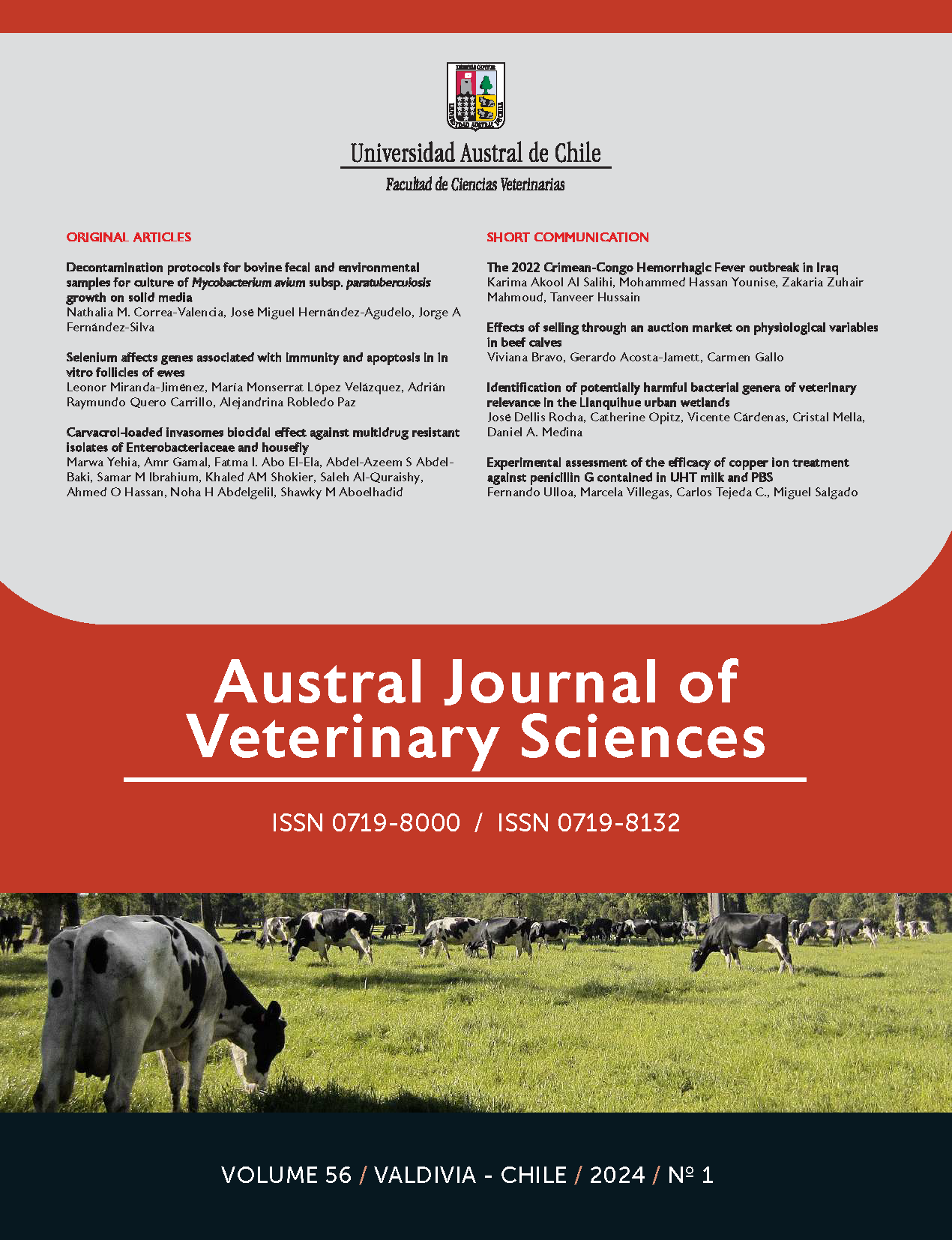Carvacrol-loaded invasomes biocidal effect against multidrug resistant isolates of Enterobacteriaceae and housefly
Contenido principal del artículo
Resumen
The current study aimed to evaluate the antimicrobial activity of carvacrol-loaded invasomes (CLI) against multidrug-resistant (MDR) Enterobacteriaceae and its mechanical vector, the housefly. CLI were prepared and charac- terized in the laboratory. Escherichia coli, Pseudomonas aeruginosa, Salmonella enterica subsp. enterica serovar Enteritidis, Salmonella enterica subsp. enterica serovar Typhimurium, and Klebsiella oxytoca were among the MDR enterobacteriaceae stains investigated. These strains were first isolated and identified from naturally infected chickens. The antibacterial ac- tivity of CLI against the MDR isolates was evaluated using the diffusion method. In addition, the insecticidal activity of CLI against housefly larvae and pupae was tested. The MDR index of all evaluated isolates was greater than 20%, indicating that they were all multidrug-resistant. CLI decreased the growth of all isolates except S. Typhimurium and P. aeruginosa at a dose of 0.0125%; however, pure carvacrol inhibited the growth of only Klebsiella oxytoca. Furthermore, both CLI and pure carvacrol inhibited Klebsiella oxytoca growth at different concentrations. CLI inhibited E. coli and S. enteritidis at lower concentrations than pure carvacrol, even at a doubled concentration. Carvacrol and CLI caused significant larval mortality even at low concentrations, with LC50 reached at concentartions of 2.54 and 2.19 µl/ml, respectively. Further- more, at a low concentration of 3.125 µl/ml, both elicited a high percentage inhibition rate (PIR) in pupae. In conclusion, CLI demonstrated substantial antibacterial action, particularly against MDR isolates, as well as pesticide activity against houseflies.


 https://orcid.org/0009-0004-1357-5548
https://orcid.org/0009-0004-1357-5548